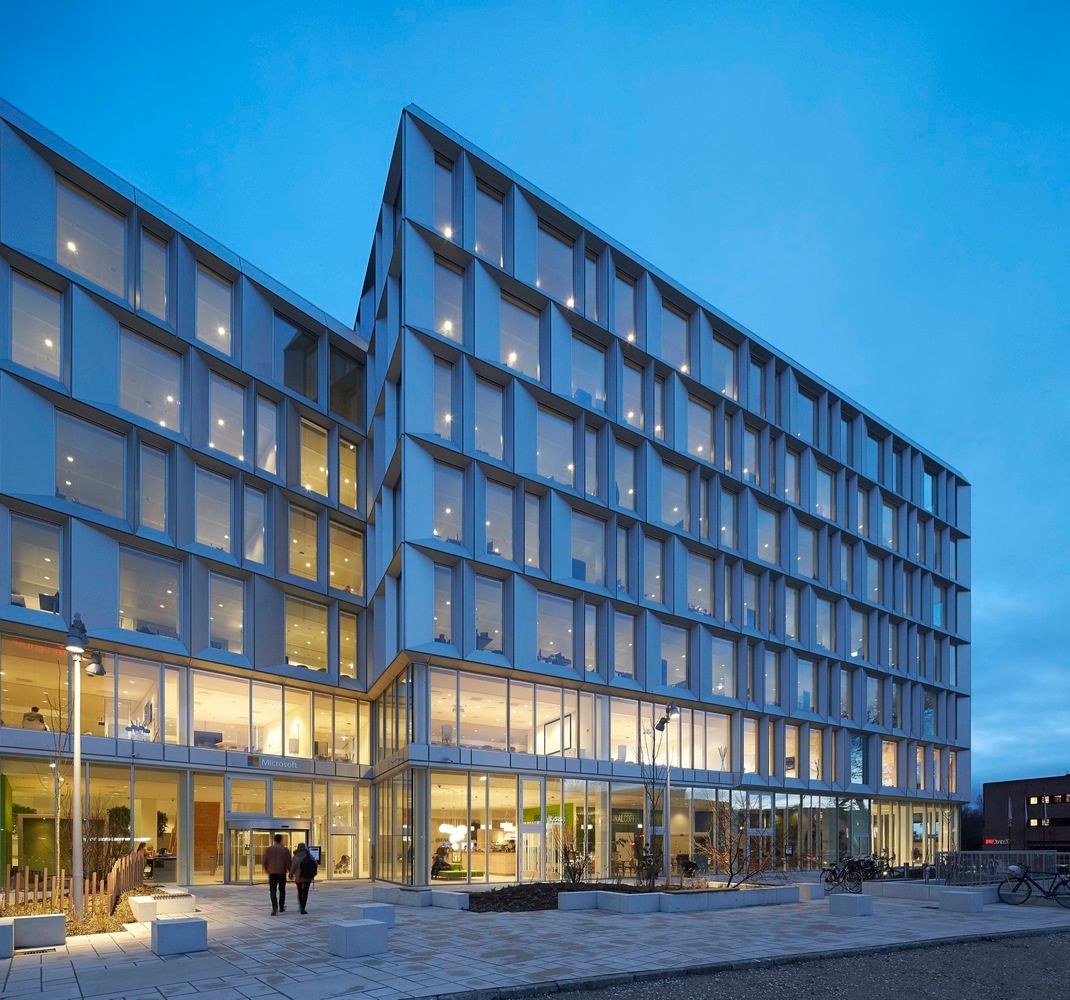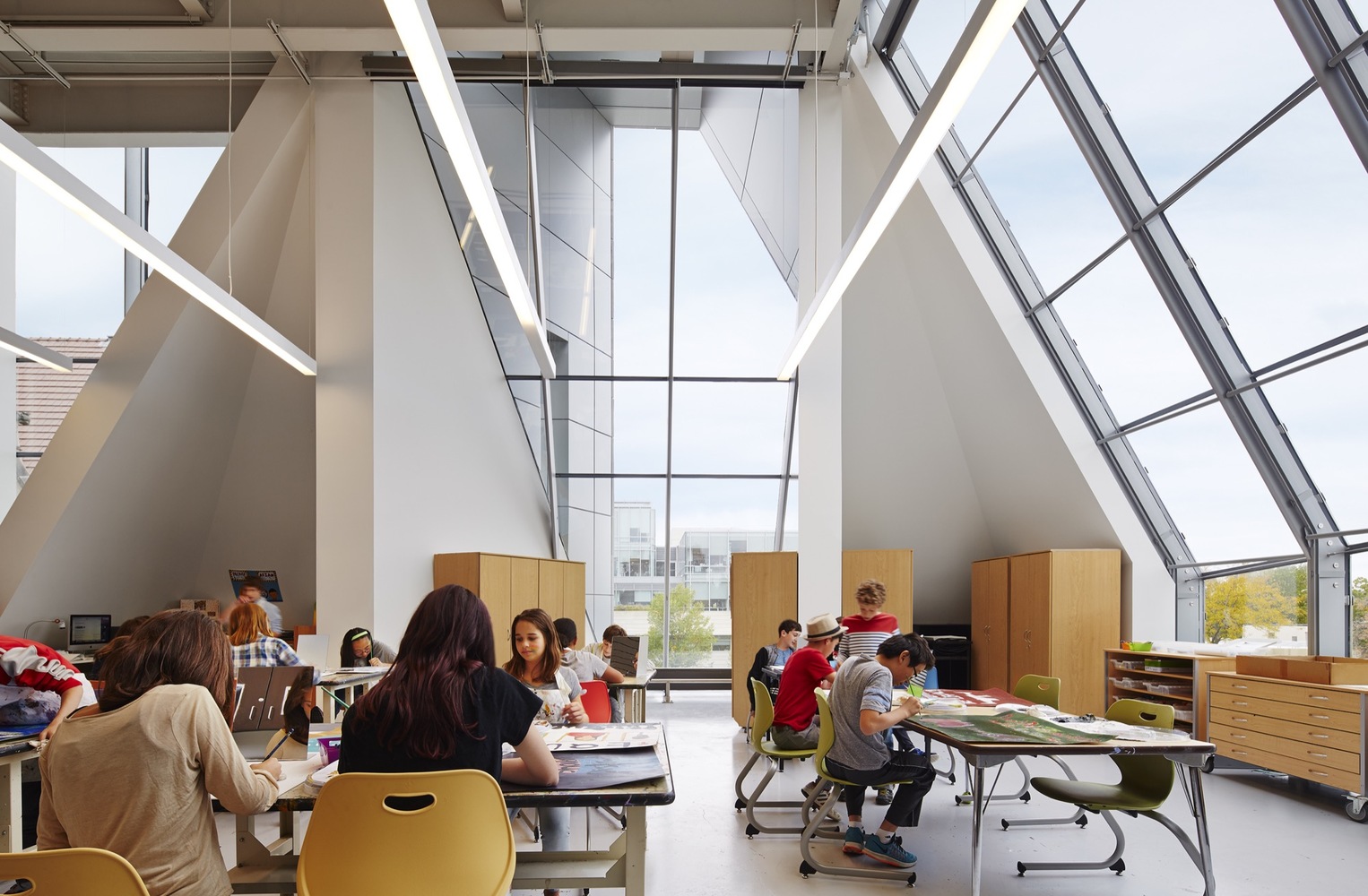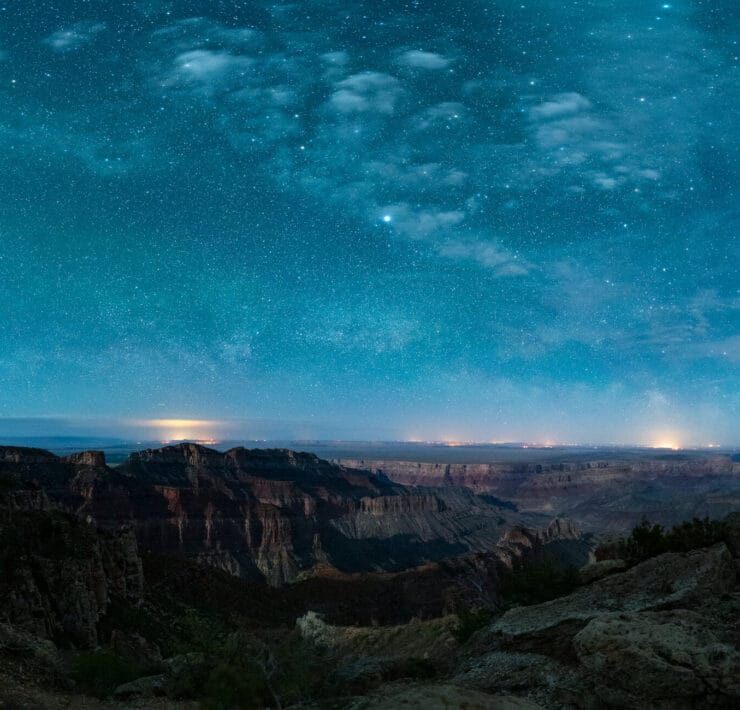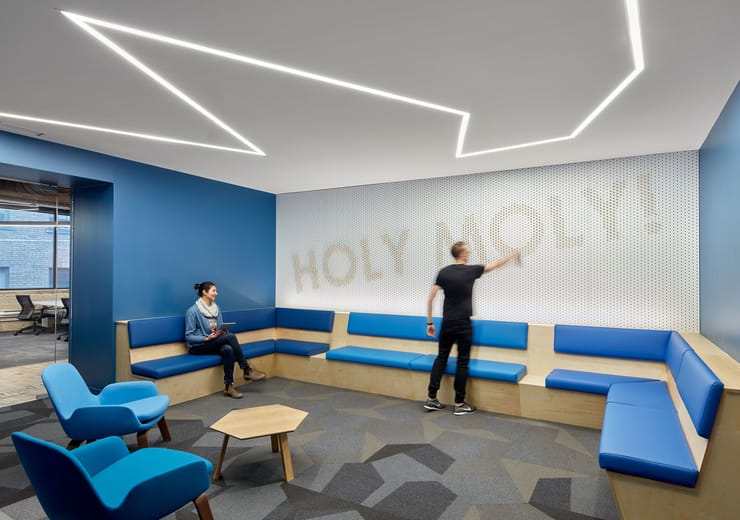The pursuit of zero-carbon cities is no longer seen as idealistic but as an obtainable and important goal. Cities across the country have set plans to reach zero-carbon emissions, with cities such as Boston, Denver and Portland committed to reducing energy use by 80% or more by 2050. These efforts aim to mitigate human impact on climate change, enhance air quality and promote energy independence.
This article explores the distinctions between renewable energy and zero-carbon goals, how cities plan on achieving them, and the critical role LED lighting plays in reducing carbon emissions.
Table of contents

Renewable energy vs zero-carbon: What’s the difference?
While often used interchangeably, “renewable energy” and “zero-carbon” are distinct concepts.
- Renewable energy focuses on inputs. It refers to energy derived from unlimited natural sources such as solar, wind, geothermal and hydropower. Cities striving to achieve 100% renewable energy aim to replace fossil fuels with these sustainable resources.
- Zero-carbon focuses on outputs—eliminating carbon dioxide emissions from energy production and consumption. While achieving zero-carbon often involves renewable energy, the primary goal is eliminating emissions.
Key insight: Renewable energy is a means to achieving a zero-carbon economy.
While the primary driver behind using renewable energy may be to stop climate change, using renewables offers other benefits as well. Renewable energy provides independence from foreign oil suppliers. Rather than sending energy dollars overseas to multinational corporations, renewable energy keeps money in the local community. The renewable energy industry is also the fastest generator of jobs in the energy sector, providing more local employment than any other energy supply.

Sources of renewable energy
Solar power
Photovoltaic (PV) panels convert sunlight into energy. The panels mount on rooftops, on the ground in solar arrays and atop charging stations, light posts and other devices. They can charge storage batteries to provide power at night or on cloudy days for an uninterrupted energy supply. Solar hot water heaters capture sunlight to heat hot water. “Passive” solar designs enable residences and buildings to use the sun’s heat to warm a space during the day and store radiant energy to release in the evening.
As of 2023, solar accounted for 5.5 percent of the global energy supply.[1]

Wind power
Wind power is generated by wind turbines with propeller-like blades that spin around a rotor connected to a shaft. When the wind blows, the blades spin the rotor and shaft, which in turn, spins a generator to create electricity.
Wind power accounts for 7.8% of the global energy mix.[1]
Hydropower
Hydropower generated when water flows through dams also creates renewable electricity. However, since dams can have such a significant negative environmental impact on fisheries and the surrounding ecosystem, the federal government along with many state governments don’t include hydropower in their calculations on how to expand renewable energy resources.
Still, hydropower accounts for 14.3% of the global energy mix, making it the largest source of renewable energy in the world.[1]
Geothermal energy
Geothermal energy taps into the heat emitted by the Earth’s core. Almost everywhere across the U.S., the upper 10 feet of the Earth’s surface maintains a nearly constant temperature of between 50 and 60 degrees Fahrenheit. Geothermal or “ground source” heat pumps tap into this resource to heat and cool buildings.
Geothermal energy currently accounts for less than one percent of the global energy mix. With limited availability in many parts of the world, geothermal is a minor contributor to the world’s energy mix.
Wave energy
The process of harnessing ocean tides is just starting to develop and could become another important renewable energy source. With wave energy, oscillating water columns or buoys attached to generators convert the rise and fall of waves into electricity. The U.S. Energy Information Administration (EIA) estimates wave energy could provide up to 2.64 trillion kilowatt hours of power in the U.S.[2]

Methods to achieve 100% renewable energy
To achieve 100% renewable energy, a city must replace all power generated by coal and oil with renewable sources, such as wind and solar.
Additionally, cities can:
- Electrify municipal vehicle fleets and public transportation systems
- Offer tax incentives for solar installations and energy-efficient technologies
- Build EV charging stations to support a transition to electric vehicles within the community
Currently, six cities run on 100% renewable electricity:[3]
- Aspen, Colorado
- Burlington, Vermont
- Greensburg, Kansas
- Georgetown, Texas
- Rock Port, Missouri
- Kodiak Island, Alaska
The path to zero-carbon
To achieve net-zero status—a state of balance between energy consumed and produced—organizations, municipalities, and institutions often implement a combination of three primary strategies. While not an exhaustive list, the following approaches are widely used to decarbonize operations.
Waste less energy
The U.S. wastes roughly two-thirds of the energy we consume each year.[4] That’s why getting to zero carbon must start with energy efficiency. Using efficient LED lights, ENERGY STAR-certified appliances and r smart home technologies, such as programmable thermostats and HVAC systems, all play a role. Insulating and weatherizing existing homes and buildings and building efficient new construction is also essential.
Meet demand with clean, renewable, non-fossil fuel energy sources
Newbuildings.org compiles an annual list of zero energy (ZE) products throughout North America. These ZE buildings target “ultra-low energy use that can be supplied through onsite renewable generation.”
Absorb CO2 already in the atmosphere
Even if we could collectively stop generating carbon dioxide today, high levels of CO2 would remain in the atmosphere for decades. Initiatives, such as reforestation, carbon capture technology and green roofs, actively remove CO2 from the atmosphere.
The role of LED lighting
One of the cheapest and easiest ways to limit carbon emissions and the waste of energy is the reduction of the demand for energy and carbon. When looking at a singular building in a city, for instance, making it carbon-free and energy efficient would mean planning it as such in the preliminary stages. From large windows with sun louvers to thick walls with good insulation to sinks with taps that have a reduced flow, there are so many solutions to reduce energy expenses and carbon emissions.
One of the most effective and successful ways is the use of LED lighting. LED, which stands for “light emitting diode,” uses almost 85% less energy than regular halogen lighting. The way they produce light is through the use of a semiconductor that releases energy when electricity goes through it.
Using exclusively LED lighting in cities that plan to reach the zero-carbon footprint is essential as it solves one of the main issues related to the citizens’ everyday use of energy. It’s interesting to note that LED lights are a central element in all cities that have attempted to reach the carbon-free goal, as it’s the cheapest and most efficient way to produce light, whether for private homes, advertising, screens or public use.
Carbon-free cities
After having considered what potential carbon-free cities have in common, it is important to understand why some of these are considered successful and others considered failures. Masdar in the United Arab Emirates was planned in 2006 and aimed to be a home for about 50,000 people. Designed by the multinational Foster and Partners, the city was supposed to have no cars with its means of transportation being driverless electric shuttles between buildings created with technologies that would’ve allowed them to resist the heat of the desert. While it may have failed its initial objective, it’s still functioning as a modern city with plan for a renewable future.
Dongtan, which is located on the island of Chongming in Shanghai, China, on the whole has been considered a failure of a potentially carbon-free city. Planned to open in 2010 for the Shanghai World Expo with accommodation for 10,000 people, Dongtan’s planners were thinking big. The metropolis was supposed to reach a population of 500,000 by 2050. The project, unfortunately, is still a project, and there has been no construction work so far. The city is still planning to be built, with promises of 66% less energy consumed by every building, which will be ventilated naturally and feature green roofs. Whether the city will be built or not in the next few years is not yet confirmed.
Here in the U.S., several cities have transitioned to 100% renewable energy:
- Burlington, Vermont, in 2014, population 42,260, uses a combination of hydroelectric power and four wind turbines
- Aspen, Colorado, in 2015, population 6,871, is now using a city-owned utility company, which utilizes wind power, solar power and geothermal heat
- Greensburg, Kansas, in 2016, population 771, took the opportunity to rebuild to become completely renewable after a devastating tornado leveled their town in 2007
- Las Vegas, Nevada, in 2016, population 632,900, uses clean energy for all of their municipal buildings. No, the casinos aren’t under this current setup
Failing the initial objective of no emissions at all can be seen as a defeat. Considering affordability and quality of life in these ecological, emission-free cities is a must, and it should not be overlooked. Eco-cities are not only an architectural work, as the concept of a city itself is something much more elaborate, which must take into consideration its inhabitants, businesses, economy, culture and resources.
The concept of building an entire city from scratch, to this end, might be the issue in the very first place. The idea that creating is superior to improving something existent is not only wrong, but dangerous for the percentage of the population that is living in non-ecological conditions that are dangerous to humans as well as the environment. The idea of building something new and luxurious that’s also ecological and has zero-carbon emissions is almost utopian sounding. Combining reduced carbon emissions with projects of new cities or neighborhoods might be the solution to the failures of zero-carbon cities.
Alcon Lighting creative director and co-founder David Hakimi works to improve lighting through research, development and education. David strives for efficiency in lighting, affording architects, lighting designers and engineers the ability to maximize LED lighting design and application. David is a graduate of the University of California, Los Angeles, where he received a Bachelors in history. David also studied lighting design at IES in Los Angeles. He traces his and Alcon Lighting’s commitment to innovation, accountability, quality and value to lessons learned from his father, Mike Hakimi, a lighting craftsman, salesman and consultant in Southern California for more than four decades. Today’s lighting for commercial use requires a deep, complete understanding of smart lighting systems and controls. David takes pride in his lighting, energy controls and design knowledge. He is driven by the desire to share his insights into lighting specification and application. This quest to share his knowledge was the impetus for David to create Insights, Alcon Lighting’s blog and resource center for helping the reader understand lighting and its application to space.






